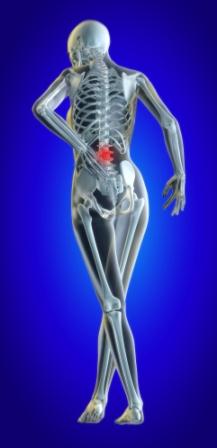Back Pain Relief FAQ
Back pain is a problem that is faced by almost all of us at some point in our lives. Employees blame back pain as their most common cause of sick leave from work. There are certain questions that arise in our mind as soon as the pain sets in, including the prognosis and diagnosis that is done by the doctors is always not correct, and the pain does not seem to go away, especially after a treatment is pursued.
As the spine has a very complex structure, it is often not possible for a doctor to find out the exact reason for the cause of the pain. That is without mentioning the stress and depression that may also be suffered by people with back pain. That is why proper education of the patients suffering from back pain is critical; however, what is even more important is ensuring that people who are not suffering from back pain are given sufficient information to prevent it from happening to them. That is why a back pain relief FAQ is extremely important for people to go through at a glance.
Back Pain Relief FAQ
The following are some common questions about low back pain:
Q: Should I put ice or heat on my back during an episode of acute low back pain?
A: Neither is essential, although ice for five minutes off and on during the day may help to block nerve impulses to and from the area, and help to break the pain cycle more quickly. Heat is usually not recommended since there may be an inflammatory reaction in the back and heat may increase such inflammation and potentially increase congestion of involved tissues, especially if a nerve is involved.
Q: Are there any stretches I can do for my back to recover faster and prevent having recurrent pain.
A: When you experience acute low back pain you may not know the exact cause of the pain. Therefore, if you try to stretch the low back muscles, you may also irritate the underlying tissues, which already may be weakened, and increase the muscle guarding. Some stretches may even pinch or compress irritated joint tissues, discs or nerve roots. It is more effective to do small and gentle pain-free movements, often best done lying down, to promote muscle relaxation, circulation and tissue healing in the low back. There is no scientific evidence that muscle stretching can prevent any injuries, although once the acute pain has subsided, it makes sense to reduce any significant tightness of hamstring muscles to indirectly reduce strain on the low back during activities.
Q: Is it true that once I have an episode of severe low back pain, my back has been injured and I will always have to be careful?
A: No, this is an old belief, which has been proven false for the vast majority of people. The best approach after an episode of acute low back pain, is to start moving around, and walk as soon as that is possible. Prolonged bed rest has been shown to delay recovery and can predispose you to having more pain down the road. A specific back rehabilitation program that promotes both recovery of normal mobility and low back stability as provided by key muscle groups and underlying connective tissues usually is the most productive way to return to an active lifestyle with the least amount of discomfort in the years to come.
Gunnar Mossberg, PT, MOMT, DPT, has practiced physical therapy in San Diego since 1982. He can be reached at gunnar@mossbergpt.com
The most common self-help guide would be a back pain FAQ for people to read and follow. The frequently asked questions will inform people about answers to the most common questions, for example, whether a hot or cold compress is helpful for relief at its onset; should I need to be very careful from the very first attack of the back pain?; does this mean the back is damaged forever; are there any exercises and stretches that may be helpful in preventing and curing back pain?; and so on. The answers to all these questions are mentioned in detail, and hopefully it will be of some help to all of us whether we are suffering from back pain or trying to avoid doing so.
In this video Dr. Mazza and Dr. Stoll discuss spinal stenosis. They explain what role imaging studies play in identifying stenosis and what options are available to treat your back pain.
In this video from 7secretsmedical.com the primary causes of sciatica are outlined.
Find out more about back pain and natural treatments by signing up for our free back pain book below.
You might also like:
Tags: Back Pain Relief Faq, pain relief















